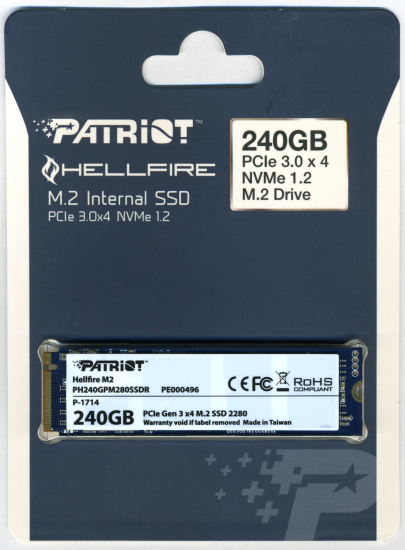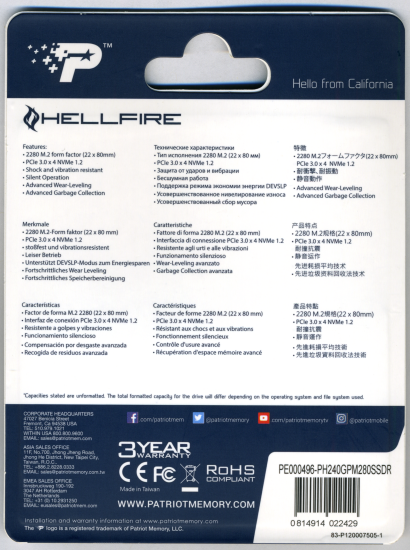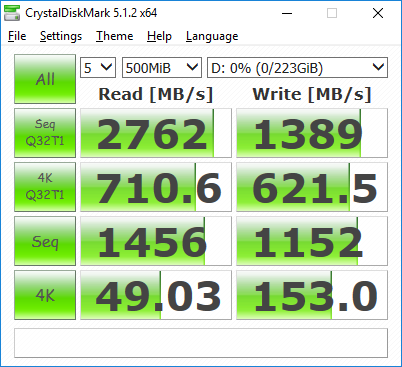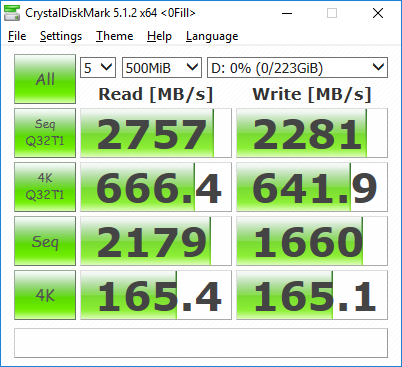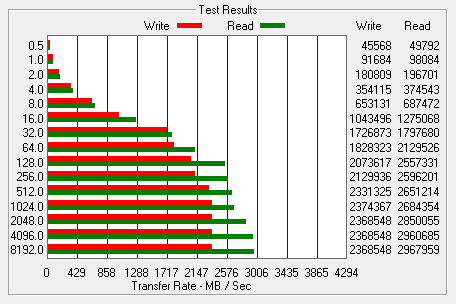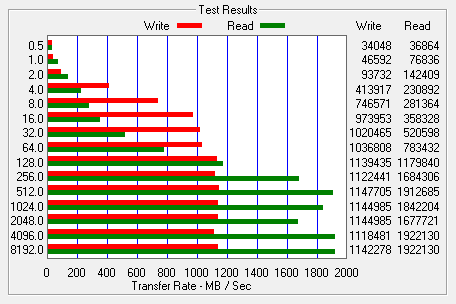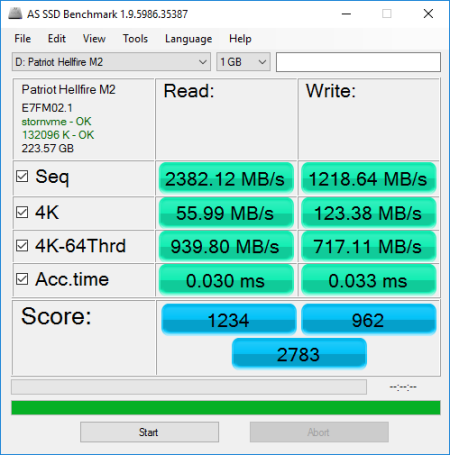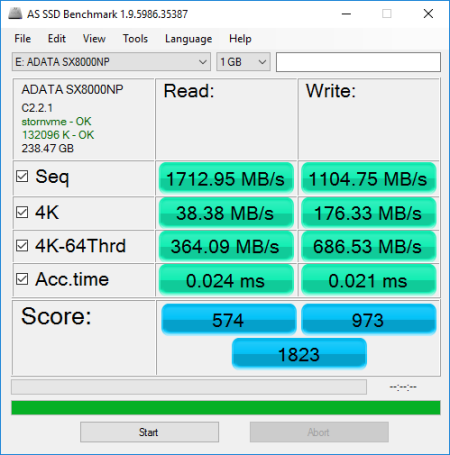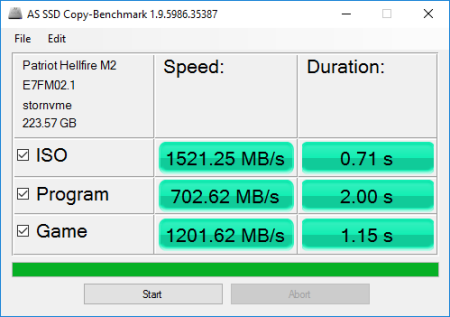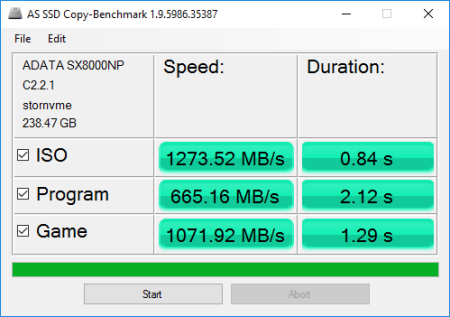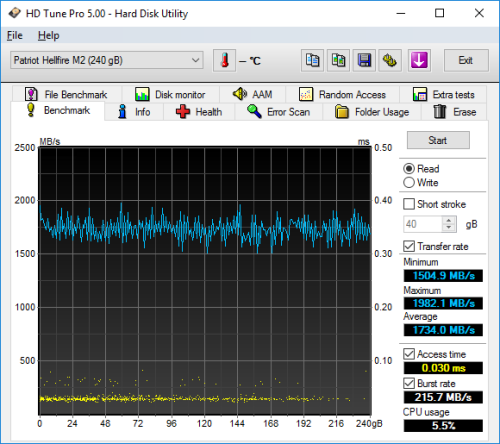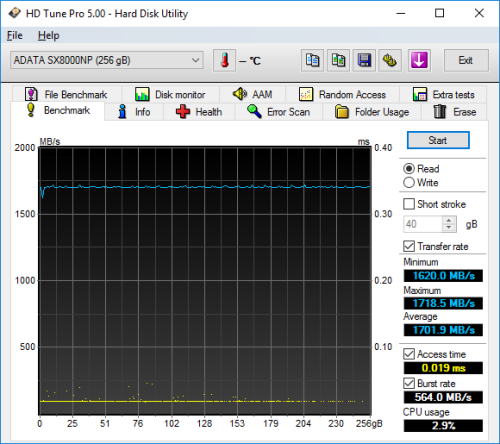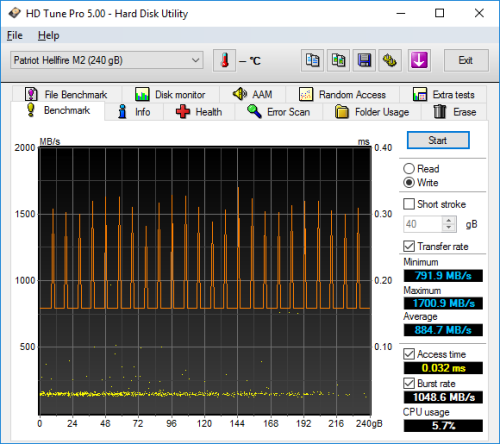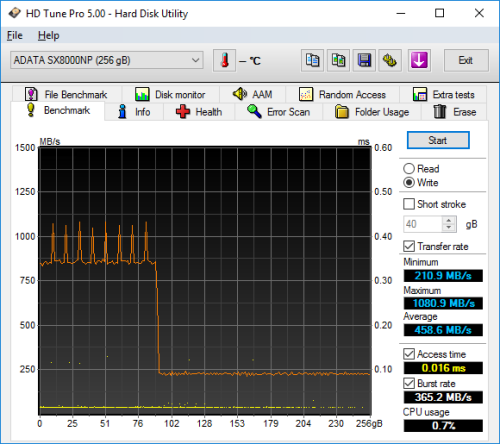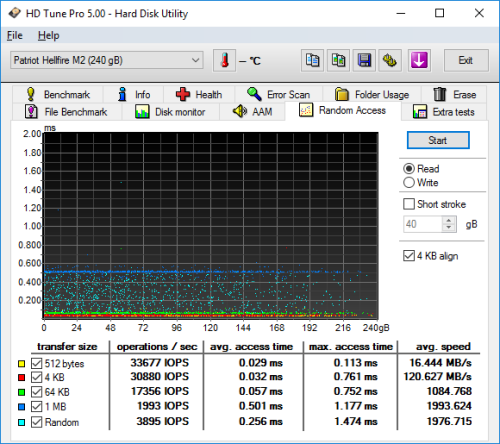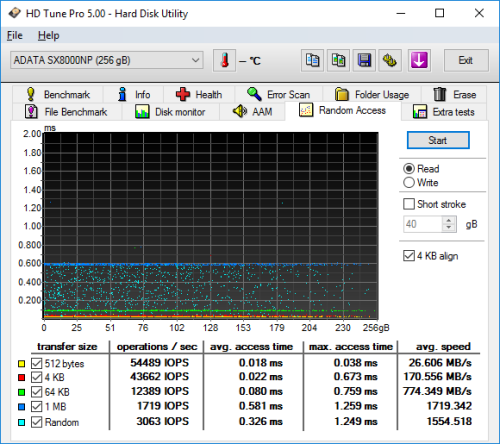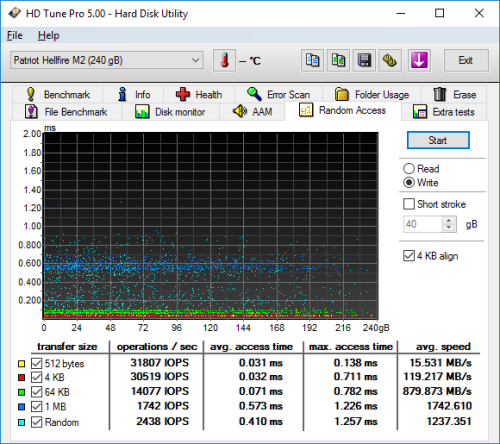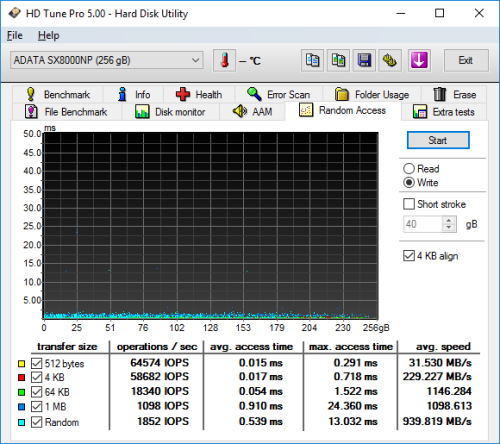

Model: Patriot Hellfire 240GB PCIe M.2 Solid State Drive
Manufacturer: Patriot Memory
Provided By: Patriot Memory
Among computer enthusiasts the name Patriot is synonymous with quality and value. Founded in 1985, this California-based company has established itself as a leader in the industry by delivering high quality memory solutions powered by the latest technology. Along with a full range of memory modules for desktops, laptops and servers, Patriot offers an assortment of flash-based data storage products including memory cards, solid state drives (SSDs) and USB flash drives.
Last fall, Patriot launched its first PCIe NVMe SSD, the Hellfire. Designed with the needs of content creators, gamers and enthusiasts in mind, this M.2 form factor drive is powered by Phison's PS5007-E7 controller and offers features like static and advanced wear-leveling, advanced garbage collection, TRIM support and bad block management. The Hellfire is also equipped with up to 480GB of Toshiba's 15nm MLC NAND flash as well as an ultra-fast PCIe Gen3 x4 NVMe 1.2 interface to deliver read and write speeds that are up to 4x faster than SATA SSDs.
The Hellfire is available in 240GB and 480TB capacities. For this review, Patriot sent us the 240GB version of the drive which is capable of delivering up to 3,000 MB/s sequential read and 2,300 MB/s sequential write speeds as well as up to 170,000 random read and 185,000 random write IOPS.
| Patriot Hellfire 240GB PCIe M.2 Solid State Drive | |||||||||||||||||||||||||||||||||||||||
General Specifications
Performance
Reliability
Power Consumption
Environmental
Dimensions and Weight
Other Features
|
Needless to say, this is only a taste of what the Hellfire has to offer. To give you an idea of what to expect, we'll take a closer look at Patriot's new PCIe SSD and then see how well it performs. Does the Hellfire have what it takes? Can it deliver the performance that we've come to expect from Patriot? Keep reading as we find out.
Instead of a box, the Hellfire comes packaged in a cardboard blister pack. The packaging advertises many of the drive's key features including its capacity, PCIe Gen3x4 interface, NVMe 1.2 support and three year warranty.
Physical Features:
The Hellfire uses the 2280 form factor for M.2 (NGFF) SSDs. It measures 22 x 80 x 3.8 mm and tips the scales at a mere 9g. The drive also has an "M key" edge connector which provides PCIe SSDs with up to 4x lanes of bandwidth.
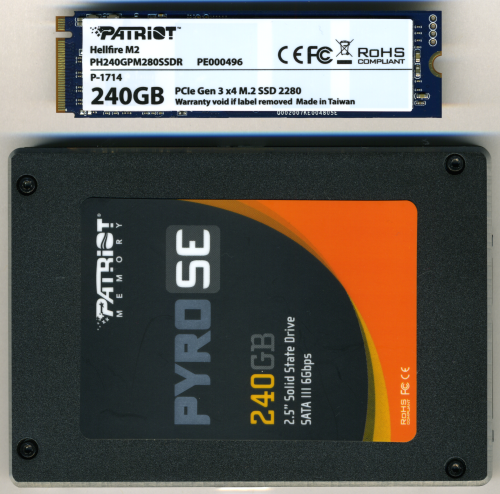
The Hellfire uses Phison's PS5007-E7 controller chip. This 8 channel, PCIe Gen 3 x4 SSD controller is powered by a quad-core CPU and offers support for SLC, MLC, TLC and 3D NAND flash. The PS5007-E7 also includes features like end-to-end data path protection, SmartECC RAID data protection, power loss protection with additional SmartFlush technology and advanced read disturb management with SmartRefresh technology.


For the 240GB version of the Hellfire, Patriot has opted to use Toshiba's 15nm MLC NAND flash. Looking at the pictures above, you can see that there are two 64GB NAND flash packages on either side of the PCB. The drive also has a single 256MB NANYA DDR3 memory chip that is used for caching.
Patriot offers a free Tool Box utility on its website that can be used to manage the Hellfire. From the main screen, users are able to view information like the firmware version, serial number, total capacity and the power-on time. The utility also shows whether features like TRIM are enabled.
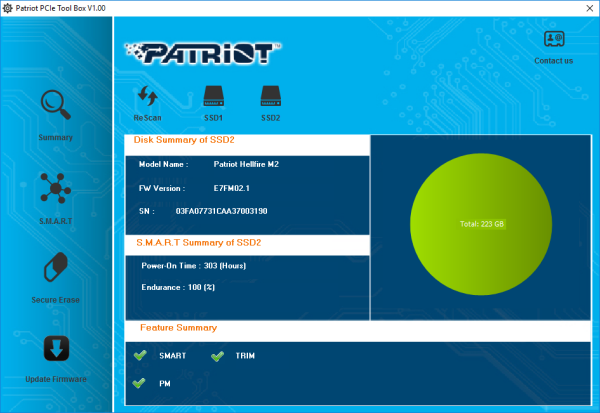
The Tool Box can also be used to view the SMART data reported by the Hellfire. Using these attributes, you can calculate the amount of data written, the number of power cycles and the current temperature.

Patriot's Tool Box also gives you the ability securely erase the Hellfire. This feature lets you reset the drive back to its default state by completely and permanently erasing all of the data stored on it.
Last, but not least, you can use the Tool Box to update the Hellfire's firmware. This feature automatically flashes the drive with the latest, stable firmware which at the time of this review is E7FM02.1.
The test system used in this review is equipped with an Intel Core i7-6700K CPU, GIGABYTE GA-Z170X-UD3 motherboard, 32GB (16GB x 2) of Crucial Ballistix Sport LT DDR4 memory, ADATA SU800 512GB SSD and a GIGABYTE GeForce GTX 1060 WINDFORCE OC 6G graphics card. For the operating system, I installed a fresh copy of Windows 10 Enterprise.
To test the performance of Patriot's Hellfire SSD, I ran a series of benchmarks using CrystalDiskMark, HD Tach RW, ATTO Disk Benchmark, AS SSD, HD Tune Pro, Anvil's Storage Utilities, Iometer and PCMark 8. For comparison, I've also included test results from the ADATA XPG SX8000, Samsung 960 PRO, Toshiba OCZ RD400, Samsung 950 PRO, Toshiba OCZ VX500, ADATA Ultimate SU800, Plextor S2C, Crucial M300, Plextor M7V, PNY CS1311, OCZ Trion 150, PNY CS2211, Plextor M6V, Crucial BX200, OCZ Trion 100, Kingston HyperX Savage, Crucial MX200, OCZ Vector 180, Samsung SSD 850 EVO and Samsung SSD 850 PRO.
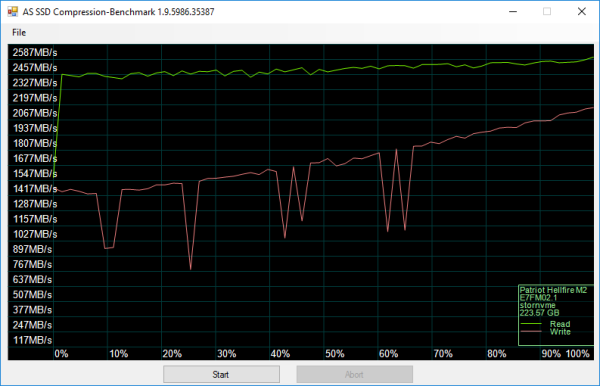
As I mentioned earlier, the Hellfire is based on Phison's PS5007-E7 controller chip. Looking at the screenshot above, you can see that there is a considerable performance difference when writing incompressible (0%) and compressible (100%) data.
CrystalDiskMark 5.0.3:
First, I ran a few quick tests using CrystalDiskMark. This benchmark tool measures the performance of a storage device by testing its sequential read and write speeds as well as its random read and write speeds using blocks 512K and 4K in size.
According to Patriot, the 240GB version of the Hellfire is capable of reading at 2,740 MB/s and writing at 1,090 MB/s. Looking at the screenshot above, you can see that the drive had no problems reaching these speeds in CrystalDiskMark's sequential read and write tests.
The Hellfire's performance was better for the most part when using highly compressible 0x00 (0 Fill) data. This time around, the drive was able to read at 2757 MB/s and write at 2281 MB/s.
HD Tach RW 3.0.4.0:
Next, I used HD Tach to test the Hellfire's read, write and burst speeds as well as its seek times and CPU usage.
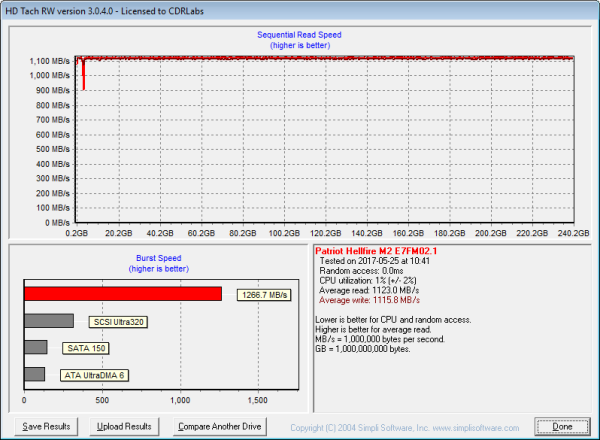
Patriot Hellfire 240GB
The Hellfire's performance was hit and miss when tested with HD Tach. While the drive was able to write at 1,115.8 MB/s, its read speed averaged out at only 1123.0 MB/s.
ATTO Disk Benchmark 2.46:
I also used ATTO Disk Benchmark to test the Hellfire's sequential read and write speeds. The tests are run using blocks ranging in size from 0.5KB to 8192KB and the total length set to 256MB.
When tested with ATTO, the Hellfire's read speeds topped out at about 2,967 MB/s and its write speeds at 2,374 MB/s.
AS SSD:
AS SSD is a benchmark designed specifically for solid state drives. The application contains five synthetic tests used to determine the sequential and random read and write performance of a drive.
AS SSD also includes a copy benchmark. This test copies an ISO (two large files), program (many small files) and game (small and large files), returning the speed and duration of each.
HD Tune Pro 5.00:
Next, I ran a series of tests using HD Tune Pro. This hard disk utility measures a drive's performance by testing its sequential read and write speeds as well as its access time, burst rate and CPU usage. For this review, I'm also going to use it to benchmark the Hellfire's random read and write speeds, random access times and the number of operations per second.
The Hellfire performed relatively well when benchmarked with HD Tune. The drive had average read and write speeds of 1734.0 MB/s and 884.7 MB/s, respectively, and a burst rate of 215.7 MB/s when reading.
When writing 4KB blocks, the Hellfire reached 30,519 IOPS and had an average speed of 119.217 MB/s. The drive was slightly faster when reading, reaching 30,880 IOPS with an average speed of 120.627 MB/s.
Anvil's Storage Utilities:
Anvil's Storage Utilities is another benchmark designed with SSDs in mind. The standard storage benchmark measures a drive's performance by testing its transfer speeds, access times and IOPS.
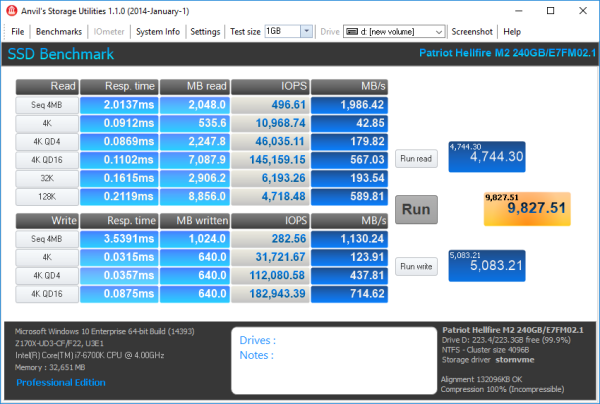
Patriot Hellfire 240GB - Incompressible Data

Patriot Hellfire 240GB - Compressible Data
Iometer:
Lastly, I ran a series of tests using Iometer. This tool can be configured to benchmark a number of things. In this case, I used it to measure the Hellfire's read and write speeds and the number of operations per second. The tests were run using random bytes and a queue depth of 3.

The Hellfire's performance was very similar to what we saw in our other tests. The drive was able to read at 2462.33 MB/s and write at 1235.19 MB/s.

The Hellfire also performed very well when doing random reads and writes. In our tests, the drive was able to read at 217.47 MB/s and write at 836.54 MB/s.

According to Patriot, the 240GB Hellfire is capable of up to 170,000 IOPS when reading and 185,000 IOPS when writing 4K blocks. In our tests, the drive reached 55,673 random read IOPS and 214,154 random write IOPS. As with most drives, the Hellfire performed better at higher queue depths. With the queue depth set to 32, it reached 221,543 random read IOPS and 236,773 random write IOPS.
PCMark 8 - Storage Test:
PCMark 8 is a complete benchmark for Windows. It includes five benchmark tests, each designed around a specific scenario. The storage benchmark measures drive performance using real-world traces recorded from Adobe Creative Suite, Microsoft Office and a selection of popular games.
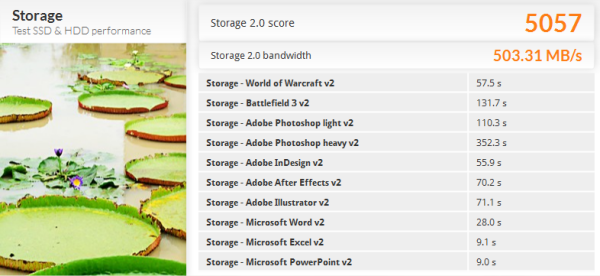
PCMark 8 also includes a consistency test which measures the performance consistency and degradation tendency of a storage system. The test reports the performance level at the start, the degraded steady-state and the recovered state as well as the number of iterations required to reach the degraded state and the recovered state. For this test, we are focusing on the Adobe Photoshop (Heavy) trace and will look at both the bandwidth and latency of the drive


The Hellfire's performance was hit in miss in this test. During the degradation and steady phases, the drive's bandwidth dropped below 200 MB/s, pushing its latency above the 200ms mark. The Hellfire recovered quickly though, jumping back up to 800 MB/s.
TRIM Performance:
While SSD's offer many benefits, there are some downsides to using flash memory. One of the biggest issues people run into is performance degradation. Over time, an SSD will run out of fresh blocks and will have to write over data the file system has marked as deleted. This procedure is very complicated and can slow an SSD's write speeds considerably.
To fix this problem, most manufacturers have added TRIM support to their SSDs. The TRIM command allows an operating system, such as Windows 7, to tell an SSD which data blocks are no longer in use. Using this information, the drive pro-actively erases these blocks and adds them to the free block pool.

To test the Hellfire's TRIM and garbage collection functions, I first put the drive in a "dirty" state. I used Iometer to fill the entire drive and then ran a random write test for 30 minutes. Looking at the screenshot below, you can see that the Hellfire's average read and write speeds dropped to 312.6 MB/s and 690.5 MB/s, respectively.

Patriot Hellfire - Dirty
To see how well the Hellfire could recover, I let the computer sit for about 30 minutes and then reran the test. The drive wasn't able to reach the factory fresh performance shown in our earlier tests. However, its average read speed jumped up to 1110.8 MB/s.

Patriot Hellfire - After TRIM
Lastly, I used Parted Magic to perform a secure erase on the Hellfire. With the drive wiped clean, it had average read and write speeds of 1128.2 MB/s and 812.1 MB/s, respectively.

Patriot Hellfire - Secure Erased
Final Thoughts:
Since its release, the Patriot Hellfire has received a lot of positive press and, as you saw in our review, it's well deserved. This compact, M.2 form factor SSD is powered by Phison's PS5007-E7 controller and is available with up to 480GB of Toshiba's 15nm MLC NAND flash. Combine this with an NVMe 1.2 certified, PCIe Gen3 x4 interface and you have a drive capable of delivering nearly four times the performance of your average SATA 6Gb/s SSD. In our sequential read and write tests, the 240GB version of the drive was able to read at speeds as high as 2,967 MB/s and write at speeds in excess of 2,281 MB/s. The Hellfire also did very well in our random write tests, producing more than 214,000 IOPS at low queue depths.
That being said, the Hellfire is not without its down sides. Like other Phison PS5007 based SSDs, it tends to run a bit hot. Under normal workloads, the drive's temperature stayed below 56°C, but when pushed hard, it jumped up as high as 92°C. This probably won't be an issue if you have a desktop computer with plenty of airflow but it's something to keep in mind if you're looking to put the the drive in a laptop. The Hellfire's PS5007 controller also handles incompressible data differently than it does compressible data. As a result, you will see slower write speeds when working with data that is already compressed like most audio, video and image file formats.
The Patriot Hellfire is available now in 240GB and 480GB capacities. The 240GB version reviewed here currently retails for about $130. Otherwise, if you need more storage, the 480GB model can be picked up for less than $240 on Amazon.com..
Highs:
- PCIe 3.0 x4 interface with NVMe protocol
- Available in 240GB and 480GB capacities
- Equipped with Toshiba 15nm MLC NAND
- Good sequential and random read and write performance
- Small M.2 2280 form factor
- Large DRAM cache
- Reasonably priced
- 3 year warranty
Lows:
- Not as fast when writing incompressible data
- Can run hot under heavy workloads
- Does not support hardware based encryption
- Not available in a 960GB capacity


